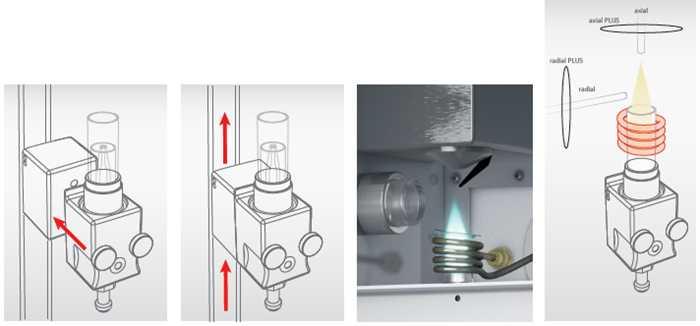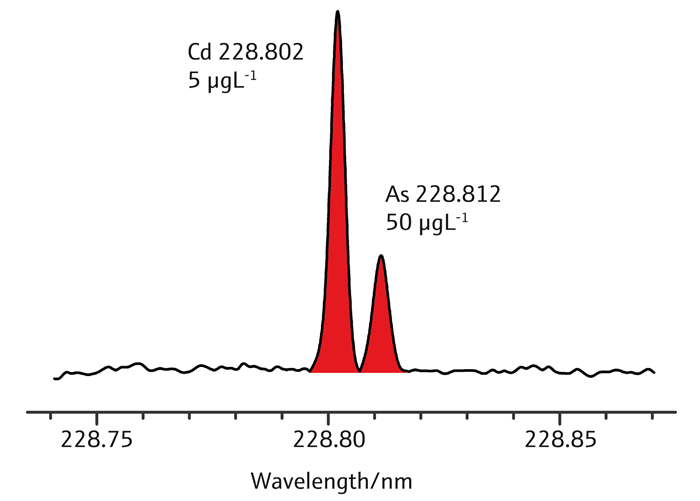This article is based on a poster originally authored by Oliver Buettel & Siqi Sun, Ph.D.
Various metals can negatively affect the refining process and the final product's performance. Therefore, they must be examined in crude oil.
However, crude oil may comprise particles, and organic solvents can destabilize plasma.
Organic matrices can cause carbon deposits in the torch and produce signal drift. Therefore, extensive stability is necessary to perform regular analyses.

 Download the Poster
Download the Poster
Method and Materials
Crude oil specimens are integrated by sonicating at 60 °C for 30 minutes.
Specimens are diluted at 1:20 in Xylene or other standardized solvents. Yttrium internal standard is used.
Calibration: 0.5-10 mg/kg, utilizing organometallic guidelines and blank oil in Xylene.
Table 1. System configuration and set-up of the sample introduction system. Source: Analytik Jena US
| Parameter |
Setting |
| RF Power |
1400 W |
| Plasma gas flow |
15 L/min |
| Nebulizer gas flow |
0.35 L/min |
| Auxilary gas flow |
1.5 L/min |
| Spray chamber |
borosilicate cyclonic spray chamber with dip tube, 50 mL |
| Injector |
quartz, inner diameter 1 mm |
| Nebulizer |
borosilicate concentric nebulizer, 1 mL/min |
| Outer tube/inner tube |
quartz/quartz |
| Pump tubing |
Viton |
| Sample pump rate |
1 mL/min |
| Read delay |
30 s |
| Rinse time |
45 s |
Analytik Jena Technology
The V-Shuttle Torch
The V-Shuttle Torch provides a leading vertical arrangement for optimum matrix tolerance with no soot. It is removable and does not require realignment. Consumable costs are minimal, and oxygen can be added.

Image Credit: Analytik Jena US
High-Resolution Array ICP-OES
- Highest resolution: 2 pm @ 200 nm CCD detector for parallel corrections and analyses.
- Completely automated background correction, including complex spectra.
- A durable RF generator with exceptional matrix handling and extended stability

Only a few picometers apart, the Cadmium and Arsenic line are well-separated and can be used analytically without difficulty. Image Credit: Analytik Jena US

Image Credit: Analytik Jena US
Table 2. Method Detection Limits and crude oil sample results. Source: Analytik Jena US
| Element |
MDL (mg/kg) |
Crude 1 |
|
Crude 2 |
|
Crude 3 |
|
| Conc. (mg/kg) |
RSD (%) |
Conc. (mg/kg) |
RSD (%) |
Conc. (mg/kg) |
RSD (%) |
| Al |
0.05658 |
2.0718 |
1.63 |
2.0028 |
0.84 |
1.9251 |
3.49 |
| Ca |
0.06446 |
4.4366 |
1.96 |
2.9558 |
1.62 |
3.7576 |
1.35 |
| Cu |
0.01776 |
0.43911 |
1.08 |
0.48229 |
1.14 |
0.44543 |
1.25 |
| Fe |
0.01144 |
20.224 |
1.35 |
15.203 |
0.03 |
20.119 |
0.6 |
| Mg |
0.00516 |
0.83873 |
0.82 |
0.87692 |
0.32 |
0.8875 |
0.26 |
| Na |
0.05522 |
9.598 |
1.27 |
10.057 |
0.76 |
7.5746 |
1.73 |
| Ni |
0.01758 |
38.377 |
0.97 |
28.989 |
0.49 |
39.934 |
0.33 |
| P |
0.0968 |
<MDL |
|
<MDL |
|
<MDL |
|
| Si |
0.04732 |
13.285 |
1.02 |
8.7253 |
0.33 |
13.135 |
1.24 |
| V |
0.0043 |
28.591 |
0.43 |
19.044 |
0.20 |
25.192 |
0.06 |
| Zn |
0.0063 |
2.0102 |
1.28 |
2.3580 |
0.38 |
0.7139 |
0.79 |
Figures of Merit
Extended Stability (4 hours):
- QC Standard: < 10% deviation
- Specimen replicate analyzes: < 5% RSD.
Method Detection Limit (MDL) < 0.1 mg/kg for all elements (incl. dilution factor).
Spike recovery: 90-110% for all elements
Calibration: R2 >0.998 for all elements
Conclusion
PlasmaQuant PQ9000 has the exceptional ability to analyze trace metals in Crude Oil simple specimen preparation.
Ashing tests are not necessary with an easy to use and maintain system. Robust plasma provides accurate, precise and extended stability with exceptional performance even for difficult specimens.
PlasmaQuant PQ9000 is engineered for excellence.

 Download the Poster
Download the Poster

This information has been sourced, reviewed and adapted from materials provided by Analytik Jena US.
For more information on this source, please visit Analytik Jena US.